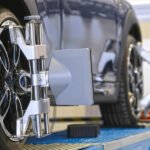

The Lure and Lament of EV Conversions: Beyond the Buzz of Going Electric
The electric vehicle revolution is roaring, with sleek new models promising zero emissions and whisper-quiet rides. But for some car enthusiasts, the hefty price tag of a factory-fresh EV holds them back. Enter the intriguing option of converting a beloved gasoline car into an electric powerhouse. It seems like a win-win: keep your classic ride, ditch the fossil fuels, and join the green parade. But hold on a minute, because beneath the shiny allure of DIY electrification lies a pit of potential potholes.
Let’s face it, a converted EV can be a dream machine. Classic Minis buzzing through city streets, vintage Beetles transformed into silent cruisers – the possibilities are endless. Popular platforms like the Volkswagen Beetle, Nissan Leaf, and even classic Land Rovers have thriving conversion communities, with companies like Zero EV and Electric GT providing well-regarded kits for the DIY-inclined. These kits typically include electric motors, battery packs, controllers, and wiring harnesses, promising to turn your gas guzzler into a green warrior.
Complex Process
However, the road to EV nirvana isn’t paved with rose petals. Converting a car is a complex and often frustrating process. Imagine wrestling with intricate wiring diagrams, squeezing bulky batteries into cramped engine bays, and deciphering cryptic error codes on your DIY dashboard. And that’s just the technical side. Safety concerns abound, with high-voltage systems demanding meticulous attention to detail and professional expertise. Even minor missteps can lead to serious electrical hazards, not to mention voiding warranties and insurance coverage.
Low Range Slow Acceleration
But let’s say you overcome the technical hurdles and your Frankenstein-ed EV rolls onto the street. Prepare for a reality that might not perfectly match the dream. Range anxiety, once a distant cousin of fuel gauge panic, becomes your constant companion. Those compact batteries provide a fraction of the distance a modern EV can manage, forcing you to become a meticulous charger-hunter. Performance, too, often takes a hit. Gone are the days of zippy acceleration; converted EVs tend to be heavier and lack the power punch of their factory-born counterparts.
High financial Cost
And then there’s the financial elephant in the room. While a conversion kit might seem cheaper than a new EV, the costs can quickly spiral. Additional parts, unforeseen complications, and professional help can inflate the budget, potentially negating the initial cost savings. Factor in battery degradation and potential replacement costs, and the long-term financial viability becomes murkier.
Reliability Issues
Moreover, the quest for reliability becomes a prominent concern. Converting a car into an electric vehicle involves more than just swapping out the engine. It requires a comprehensive overhaul of the vehicle’s electrical and mechanical systems, potentially leading to a myriad of technical glitches if not executed with precision. Owners might find themselves grappling with issues such as inconsistent charging, overheating, or premature battery degradation, all of which can be costly to rectify.
So, what’s the takeaway? Converting a car to electric is certainly not for the faint of heart. It demands technical expertise, meticulous attention to detail, and a hefty dose of patience. While the environmental and aesthetic benefits are undeniable, the practical downsides and financial uncertainties can’t be ignored. Before embarking on this electrifying DIY journey, be sure to weigh the risks and rewards carefully. Remember, sometimes, the greenest grass might just be on the other side of the showroom floor.
Add a comment Cancel reply
Categories
- Car Gadgets (17)
- Car News (33)
- Car Reviews (43)
- Car Wars (7)
- Mechanicals (32)
- Uncategorized (2)
Recent Posts
About us

Popular Tags
Related posts


How PPF (Paint protection film) Keeps your car paint neat.

Brightening Up Your Dashboard: Switching from Regular to LED Dashboard Bulbs








